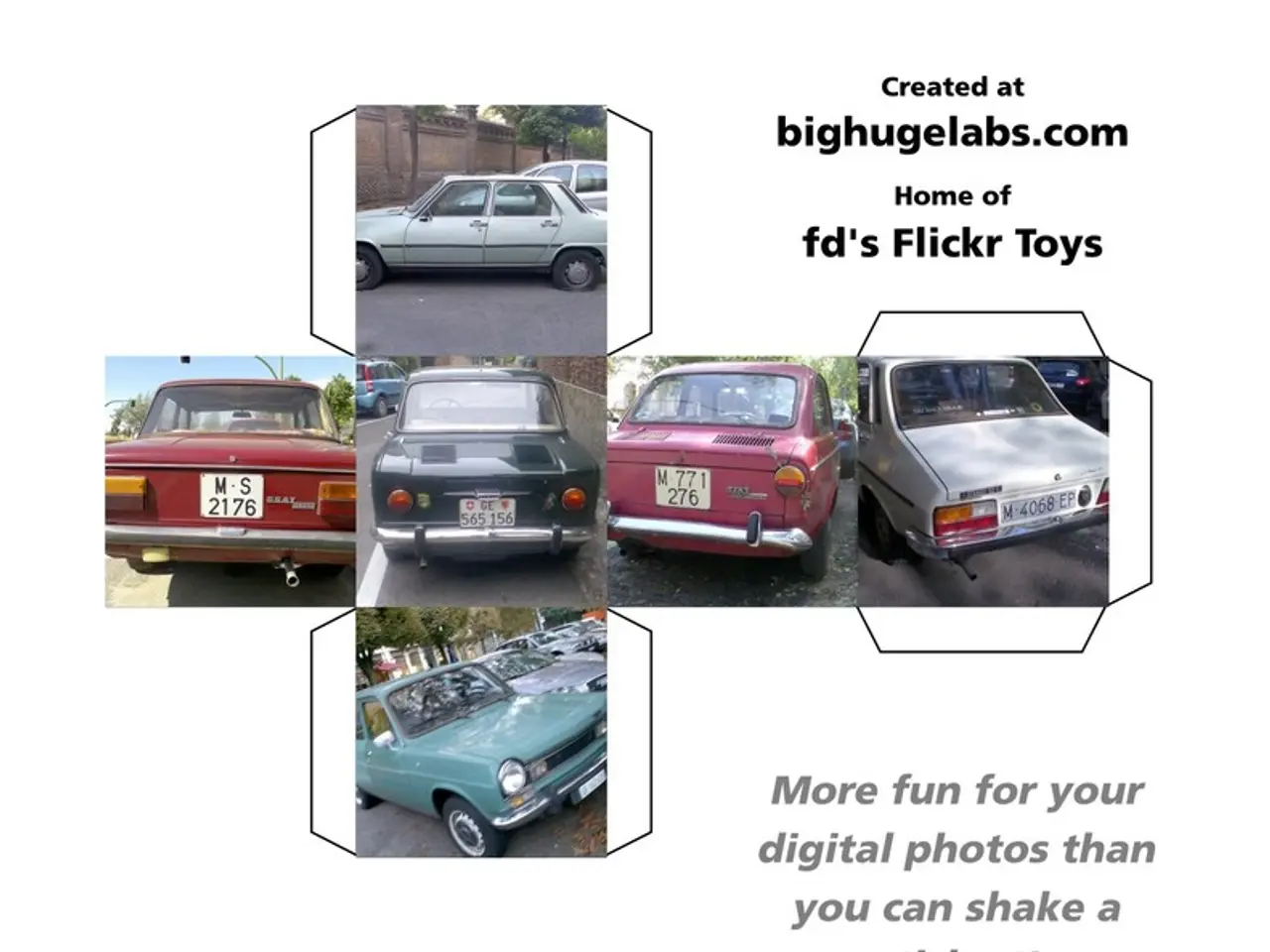Advancements in Green Transport Technologies in the 21st Century
In the automotive industry, a shift towards sustainability is underway, with numerous advancements being made to reduce carbon emissions and promote energy efficiency.
One significant area of focus is Advanced Emissions Control. Energy efficiency measures in auto plants, such as waste heat recovery systems, are proving to be highly effective. For instance, at the Fort Wayne Assembly Plant, these measures provide enough energy to heat more than 80% of the site's buildings [1].
Recycled and bio-based materials are also becoming commonplace in car manufacturing, helping to reduce waste and lower the carbon footprint. For example, Ford has been using soy-based foam in seats since 2008 [1].
Auto factories are now increasingly powered by renewable energy, with many investing in solar, wind, and hydroelectric power to run their plants. This shift reduces the carbon emissions associated with vehicle production [1].
Design for Disassembly (DfD) and Vehicle Recycling are also key considerations. Electric Vehicles (EVs) use regenerative braking systems to capture energy during braking processes, which is used to recharge the vehicle's battery, improving energy efficiency [1].
Lightweight materials like aluminum, carbon fiber, and magnesium have been increasingly used in cars to reduce weight and improve efficiency. The 2015 Ford F-150, for instance, cut approximately 15% of its body weight by switching to an aluminum body [1].
EVs have become a popular and sustainable alternative to traditional gasoline-powered vehicles. Cars like the Tesla Model 3 and Ford Mustang Mach-E are making electric driving accessible and desirable for millions [2].
Recent advancements in hydrogen fuel cell vehicles (FCEVs) include new concept models focusing on improved performance, durability, and driving range. Hyundai's upcoming "Initum" SUV, for example, promises over 400 miles range, faster acceleration, and a 40% more durable third-generation fuel-cell stack compared to previous models [3].
Hydrogen fuel cells operate by combining hydrogen and oxygen to generate electricity onboard, powering electric motors without direct emissions other than water vapor, making them a promising zero-emission alternative to internal combustion engines [3][4].
Commercial FCEVs like the Toyota Mirai and Hyundai NEXO provide fast refueling times and long driving ranges, which are advantageous for fleets and long-distance travel compared to battery electric vehicles [4].
However, challenges remain, chiefly in scaling up sustainable hydrogen production and infrastructure. Most hydrogen is still produced from natural gas, a process that is not carbon-neutral, but alternatives like water electrolysis powered by renewable electricity are in development [2][4].
Expanding such green hydrogen production and refueling infrastructure is critical for widespread adoption and realizing hydrogen’s full potential to reduce greenhouse gas emissions in transportation [2][4].
Hydrogen fuel cell technologies are also expanding beyond vehicles into stationary power applications. For instance, Honda is repurposing automotive fuel cells for data center power, integrating by-product hydrogen from electrolysis, demonstrating a broader role in hydrogen society development and energy decentralization [5].
Water efficiency is another key consideration. Hydrogen fuel cell vehicles generate electricity onboard by combining hydrogen with oxygen, emitting only water vapor. Commercial models like the Toyota Mirai and the Hyundai NEXO offer fast refueling and long driving ranges [2].
Hybrid cars, which combine a gasoline engine with an electric motor, deliver better fuel efficiency and lower emissions than conventional vehicles. The first was the 1997 Toyota Prius, which set a fuel economy target of 66 miles per gallon [6].
EV battery technology has surged ahead, with potential for longer ranges, faster charging times, higher energy density, and lower costs. Research is also ongoing into alternatives to lithium-ion batteries, such as sodium-ion batteries [6].
In conclusion, the automotive industry is making significant strides towards a greener future. Advancements in emissions control, electric vehicles, hydrogen fuel cells, hybrid cars, and battery technology are all contributing to a more sustainable transportation sector. However, challenges remain, particularly in scaling up renewable hydrogen production and infrastructure, and these will need to be addressed for a truly carbon-neutral future.
[1] Advanced Emissions Control [2] Hydrogen Fuel Cell Vehicles [3] Hyundai Initium [4] Hydrogen Fuel Cells in Transportation [5] Honda Energy [6] Hybrid Cars
- Electric Vehicles (EVs), such as the Tesla Model 3 and Ford Mustang Mach-E, are not only reducing carbon emissions but also making electric driving an accessible and desirable lifestyle choice.
- The finance sector is increasingly interested in the automotive industry's shift towards sustainability, as advancements in emissions control, electric vehicles, hydrogen fuel cells, hybrid cars, and battery technology present potential for profitable investments.
- In the transportation industry, the emphasis on sustainability extends beyond cars to advanced technologies like hydrogen fuel cell vehicles and hydrogen fuel cell stationary power applications, promising to significantly reduce greenhouse gas emissions.




